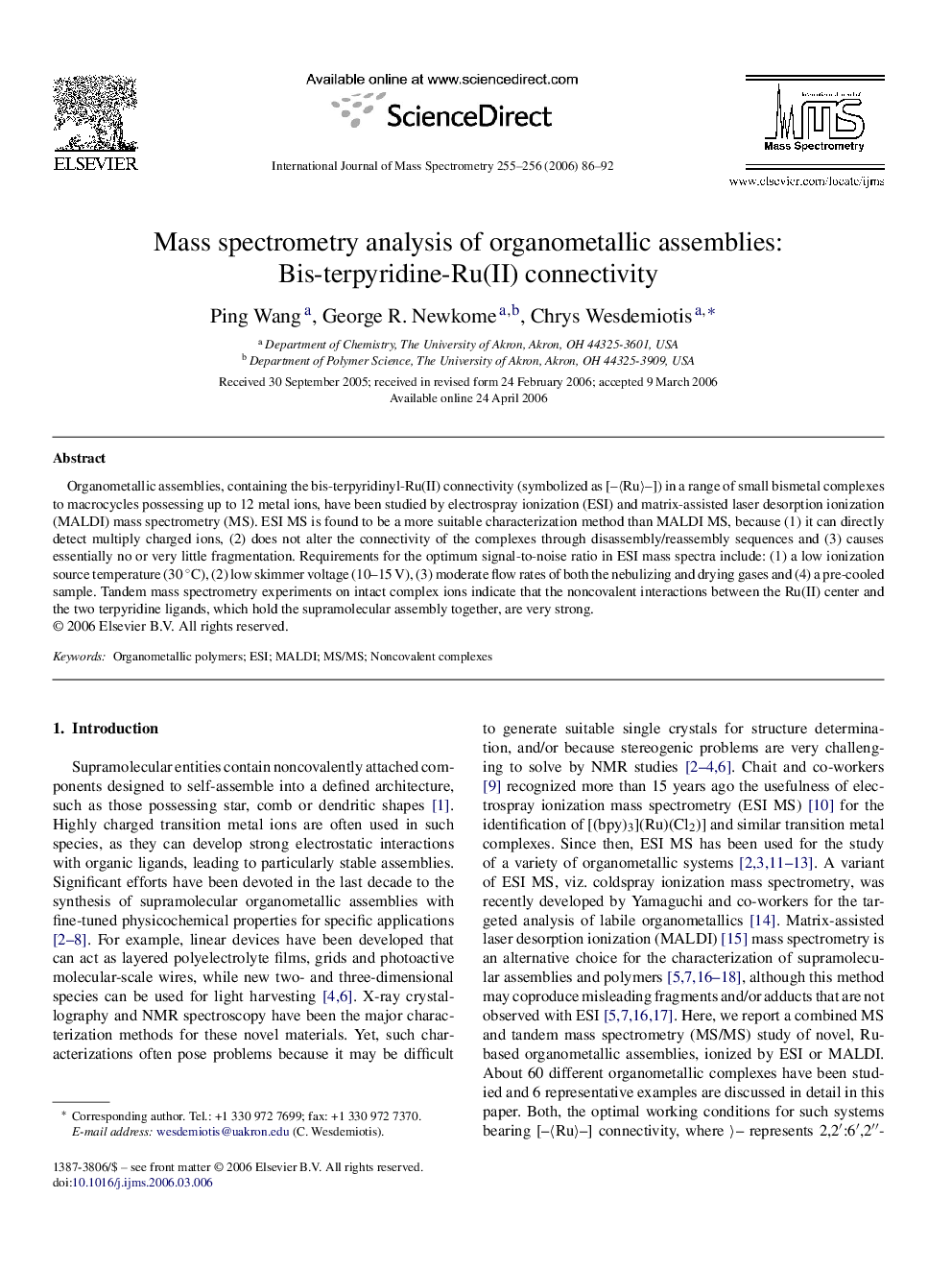| Article ID | Journal | Published Year | Pages | File Type |
|---|---|---|---|---|
| 1194726 | International Journal of Mass Spectrometry | 2006 | 7 Pages |
Organometallic assemblies, containing the bis-terpyridinyl-Ru(II) connectivity (symbolized as [–〈Ru〉–]) in a range of small bismetal complexes to macrocycles possessing up to 12 metal ions, have been studied by electrospray ionization (ESI) and matrix-assisted laser desorption ionization (MALDI) mass spectrometry (MS). ESI MS is found to be a more suitable characterization method than MALDI MS, because (1) it can directly detect multiply charged ions, (2) does not alter the connectivity of the complexes through disassembly/reassembly sequences and (3) causes essentially no or very little fragmentation. Requirements for the optimum signal-to-noise ratio in ESI mass spectra include: (1) a low ionization source temperature (30 °C), (2) low skimmer voltage (10–15 V), (3) moderate flow rates of both the nebulizing and drying gases and (4) a pre-cooled sample. Tandem mass spectrometry experiments on intact complex ions indicate that the noncovalent interactions between the Ru(II) center and the two terpyridine ligands, which hold the supramolecular assembly together, are very strong.
